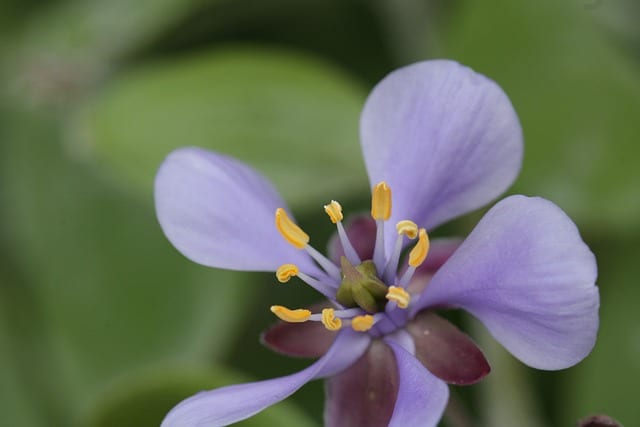There are several types of wood that are considered rare, but one of the rarest is Lignum Vitae, which is also known as “tree of life.” It’s a tropical hardwood tree species of the genus Guaiacum, native to the Caribbean and parts of Central and South America.
Lignum Vitae is a dense, oily wood that is extremely durable and resistant to rot, decay, and insects. Because of these properties, it was highly valued for maritime use, such as for ship’s bearings, propellers, and blocks for rigging.
This made it to be heavily logged in the past, and overharvesting has led to it being listed as an endangered species and is now protected by CITES (Convention on International Trade in Endangered Species of Wild Fauna and Flora) making it hard to find and costly.
What are the main the properties of Lignum Vitae?
Some of the key properties of Lignum Vitae include:
- Density: Lignum Vitae is one of the densest woods in the world, with a specific gravity of 1.3 or higher, which is about twice as heavy as water.
- Hardness: It’s extremely hard and durable, making it resistant to wear and tear. It has a Janka hardness rating of 4500.
- Strength: Its strength and durability make it ideal for heavy-duty applications such as shipbuilding, where it is used for components such as bearings, propellers, and blocks for rigging.
- Weather resistant: Lignum Vitae is highly resistant to decay and rot, even in marine environments, and is also resistant to termites, fungi, and marine borers.
- Color: Lignum Vitae varies in color, from yellow to dark green, often with a darker heartwood.
- Aromatic: Lignum Vitae has a strong and distinct smell, often described as a mix of sweet, woody, and spicy.
- Oily Resin: It contains an oily resin that can be extracted and used for medicinal purposes, as well as for making a varnish, which is used to preserve and protect the wood.
- Protection: Lignum vitae is listed in CITES (Convention on International Trade in Endangered Species of Wild Fauna and Flora) which means that the trade of this species is restricted, to protect the tree from overharvesting, and ensure the survival of the species.
Given its unique properties, Lignum Vitae is a valuable resource, however, over-harvesting, illegal logging, and habitat loss have led to its rarity, and it is now considered to be endangered, making it a scarce resource. Sustainable logging practices and reforestation initiatives are important to protect this species and others from extinction.
Where is Lignum Vitae mostly grown?
Lignum Vitae is grown in Jamaica, Cuba, and the Bahamas, as well as in Mexico along with Central American countries such as Belize, and Honduras. It can also be found in South American countries such as Colombia, Venezuela, and Ecuador.
In the Caribbean, Lignum Vitae is found mostly in dry coastal forests, scrublands and rocky areas, and in Central and South America it’s found mostly in dry forests, savannas, and also in high-altitude forests. These areas have a warm and humid climate, which is ideal for the growth of Lignum Vitae.
What are the main uses of Lignum Vitae?
It is known for its density, durability, and resistance to rot, decay and insects, making it a valuable and highly sought-after wood with several main uses:
- Maritime: The wood has been traditionally used in maritime applications, such as for ship’s bearings, propellers, and blocks for rigging. Its durability and resistance to decay and rot make it an ideal wood for marine environments.
- Industrial: Lignum vitae is often used as a bearing material for high-load, high-speed machinery and also for other industrial application where resistance to wear and tear is required.
- Construction: Due to its density, hardiness and durability, lignum vitae has been used for flooring, decking, stair treads, and other construction components.
- Decorative: Lignum vitae is highly sought after by woodworkers, carpenters, and craftspeople for decorative work, such as carving and turning, and also for knife handles, pool cues, and other wooden objects.
Other examples of rare woods
Other rare woods include:
- Agarwood (Aquilaria), which is highly valued in Asia for its unique, aromatic scent, is becoming increasingly rare due to overharvesting.
- Ebony, which is a dense black wood, is also becoming increasingly rare, due to overharvesting and loss of natural habitat.
- Purpleheart, is a tropical hardwood that is native to Central and South America, known for its distinctive purple color. It is also becoming increasingly rare due to overharvesting.
It’s important to note that any species that is considered rare may not be available in commercial quantities, and if found may be expensive, due to its scarcity.
Additionally, deforestation and over-exploitation of natural resources have led to the decline of many tree species, and therefore, it’s important to consider environmentally-friendly alternatives and sustainable harvesting practices.

